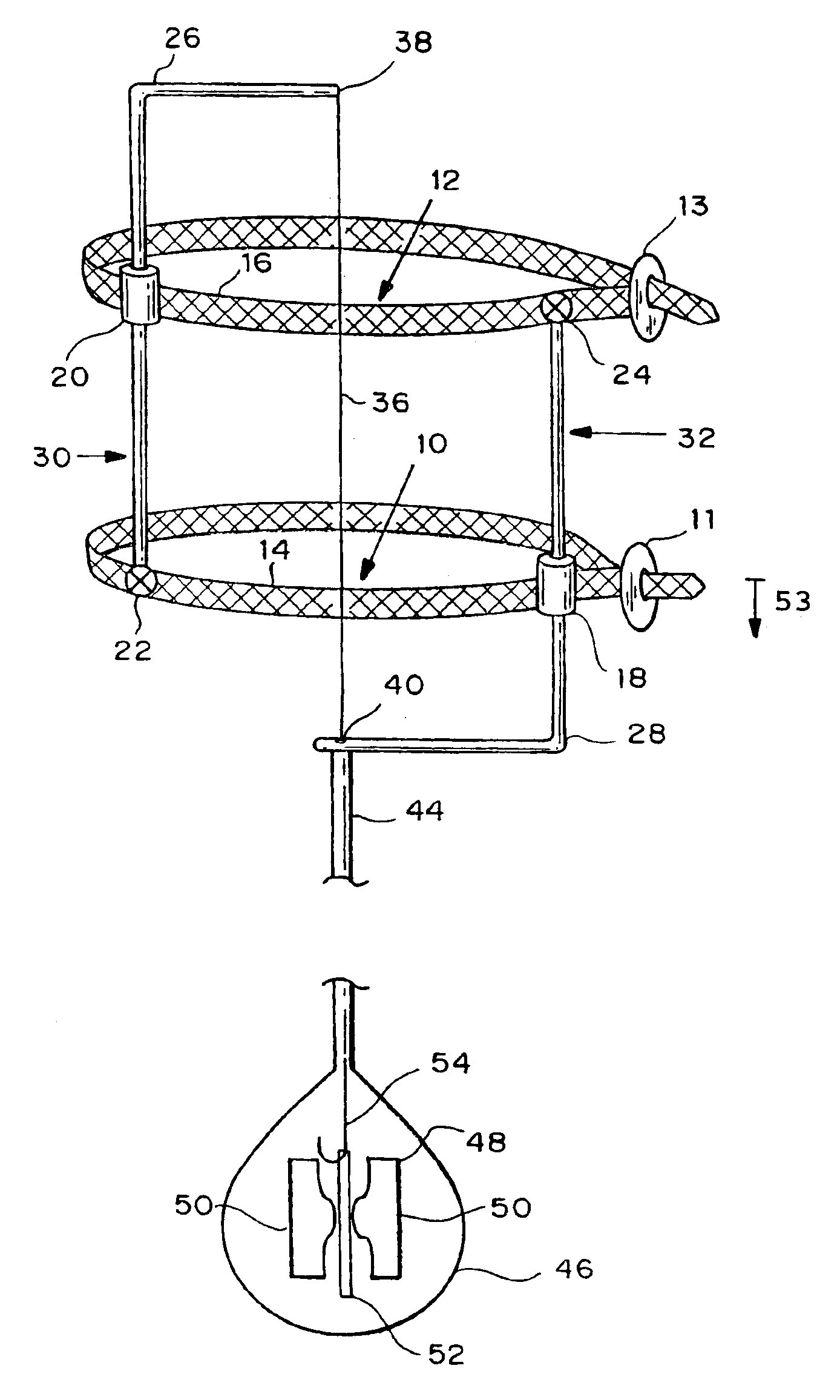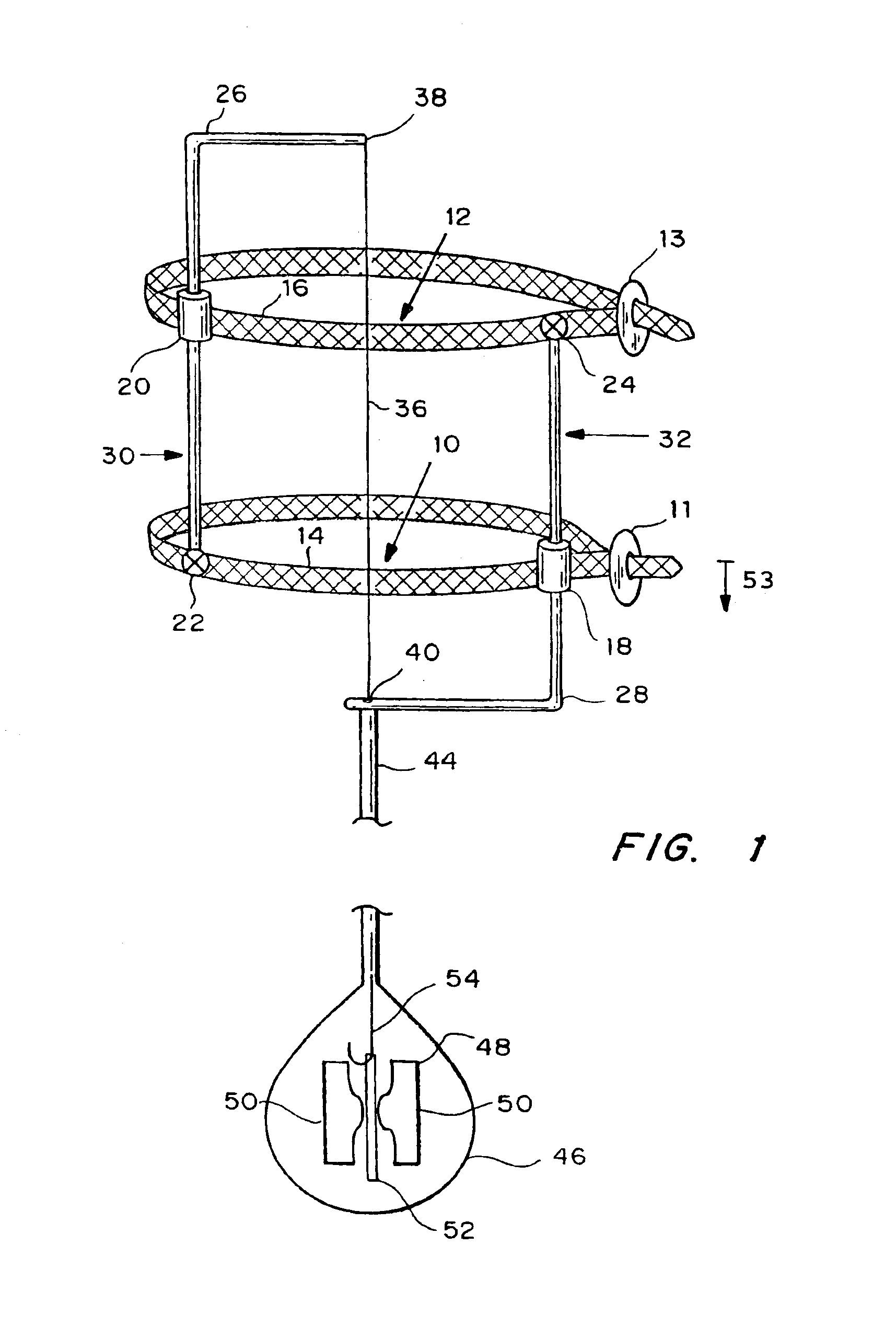Autologous vascular grafts created by vessel distension
a technology vascular arteries, which is applied in the field of autologous vascular grafts created by vessel distension, can solve the problems of difficult to obtain sufficient venous tissue for repairing occluded arteries, difficult to stretch, and difficult to achieve the effect of constant stretch, stiffness or shape chang
- Summary
- Abstract
- Description
- Claims
- Application Information
AI Technical Summary
Benefits of technology
Problems solved by technology
Method used
Image
Examples
example 1
In Vivo Vessel Stretching to Stimulate Cell Division
[0121]Leung et al., Science 191:475-77 (1976) showed that cyclic stretching stimulates synthesis of matrix components in arterial smooth muscle cells in-vitro. Subsequent studies in arterial tissue have been limited to the effects stretching on cells attached to a membrane in cell culture (see, for example, Birukov, et al., Molecular &Cellular Biochem. 144:131-39 (1995); Costa, et al., FASEB J. 5:A1609-7191 (1991)) or in a vascular graft construct (Kanda, et al., Cell Transplantation 4(6):587-95 (1995)). No known studies, however, have analyzed the effect of stretch on cells in intact vessel walls. Therefore, a study was made of porcine carotid arteries in an organ culture system developed by Conklin (Conklin, B. Viability of Porcine Common Carotid Arteries in a Novel Organ Culture System MS Thesis, Georgia Institute of Technology, 1997), in order to determine the effect of axial stretching on smooth muscle cell division in an inta...
PUM
 Login to View More
Login to View More Abstract
Description
Claims
Application Information
 Login to View More
Login to View More - R&D
- Intellectual Property
- Life Sciences
- Materials
- Tech Scout
- Unparalleled Data Quality
- Higher Quality Content
- 60% Fewer Hallucinations
Browse by: Latest US Patents, China's latest patents, Technical Efficacy Thesaurus, Application Domain, Technology Topic, Popular Technical Reports.
© 2025 PatSnap. All rights reserved.Legal|Privacy policy|Modern Slavery Act Transparency Statement|Sitemap|About US| Contact US: help@patsnap.com



